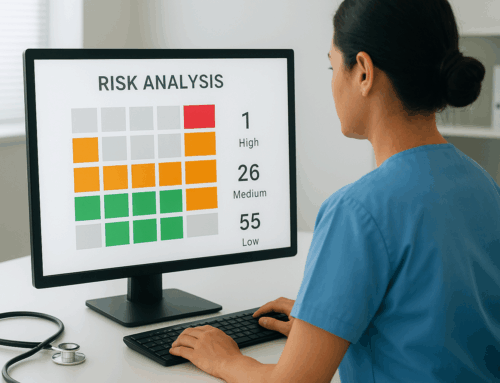
Elara Caring, one of the largest home-care providers in the country, was cited by the Occupational Safety and Health Administration for violations after a patient killed a nurse. Joyce Grayson was killed on Oct. 28, 2023, by a patient named Michael Reese. Reese, who was living in a halfway house for sex offenders, has been charged with murder.
The husband of the victim also filed a wrongful death suit against Elara Caring for their negligence, and is seeking permission to sue the state Judicial Branch and the Department of Corrections for $25 million in connection with their oversight of Reese.
The lawsuit against Elara Claring alleges, “For years prior to October 28, 2023, employees of Elara Caring affiliates experienced multiple, repeated instances in which they were verbally, physically and sexually harassed, assaulted, attacked, yelled at, chased, threatened, punched, kicked, grabbed and brushed up against by mentally unstable and/or violent patients of Elara Caring. Instead of addressing nurses’ concerns, the lawsuit alleges, the company encouraged employees to focus on increasing profitability while nurses were “chastised, shamed and gaslit, led to believe that they were overreacting.” Staff were “required to treat patients who were dangerous, mentally unstable and, frequently, unsuitable for home health care services.”
Elara Claring called the allegations “unwarranted.”
What Are the OSHA Citations and Penalties?
According to the investigation conducted by OSHA, Elara Claring did not implement adequate measures to protect employees from workplace violence and did not comply with OSHA injury and illness reporting standards. As a result, Elara Claring must implement corrective action plans and face up to $163,627 in OSHA penalty fines.
The official citations are as follows:
- OSH ACT of 1970 Section (5)(a)(1): The employer did not furnish employment and a place of employment which were free from recognized hazards that were causing or likely to cause death or serious physical harm to employees from physical assault by patients exhibiting violent behavior, resulting in serious injuries and death while working at Elara Caring
- 29 CFR 1904.40(a): The employer did not provide an authorized government representative the records within the required four (4) business hours
Elara Clara must implement several corrective actions as follows:
- Perform a risk assessment annually to assess the factors that put any healthcare employee at risk of workplace violence.
- Develop and implement a written workplace violence prevention program that is responsive to Elara’s annual WPV risk assessment, by including policies, procedures, and other controls used to protect against the hazard.
- Establish an ongoing workplace safety committee to address issues related to the health and safety of healthcare employees, including WPV.
- Develop and implement policies and procedures that require prompt, comprehensive investigations of all WPV incidents, including near miss events, to address WPV hazards and identify corrective measures. Ensure the investigations include input from the affected employee(s). Perform a root cause analysis (RCA) that includes an action plan to address findings from the RCA and share the findings and corrective actions with employees. Train managers and staff on injury and near miss reporting and investigative procedures.
- Train all employees who may come in contact with patients on the workplace violence prevention program, including methods to prevent WPV, such as de-escalation techniques, and other ways to protect themselves in situations where patients may become violent.
- Provide identifying information or photographs of patients to employees before initial home health visits.
- Develop and implement a procedure for home health clinicians to contact patients via phone or other means prior to visiting the patient’s residence to confirm the patient’s location and identifying characteristics of each patient.
- Develop and implement a system to obtain safety related information (such as background checks, history of violence, behavioral history, criminal history, home assessments, indications of risk, triggers, and coping strategies) and inform all clinical and non-clinical staff involved in the patient’s care of this information and any reported safety concerns prior to staff visiting patients.
- Develop and implement procedures for tracking employees’ location when conducting home health visits, that require employees and management to communicate and confirm an employee’s safe arrival and expected departure time and check-in when leaving a home health visit. Require managers to follow-up with employees if employees do not report in when completing a visit.
- Develop and implement policies and procedures that ensure employees who visit high-risk patients do not perform these visits alone. These policies and procedures should allow employees to request and obtain a safety escort prior to visiting these patients.
- Provide Emergency Alert Buttons to all clinical and non-clinical staff, who visit patients or potential patients at a remote location. Provide training on this equipment and ensure that the equipment is maintained and in working order at all times.
- Provide personal safety devices for employees to use in a hazardous situation, such as mace or pepper spray, to all clinical and non-clinical staff, who visit patients or potential patients at a remote location. Provide training on this equipment and ensure that the equipment is maintained and in working order at all times.
- Position each medication lockbox at each patient’s residence as close as possible to an exit.
- Allow clinicians to complete data entry in their vehicle rather than in the patient’s residence, where data entry and attention to tablet screens is likely unsafe.









